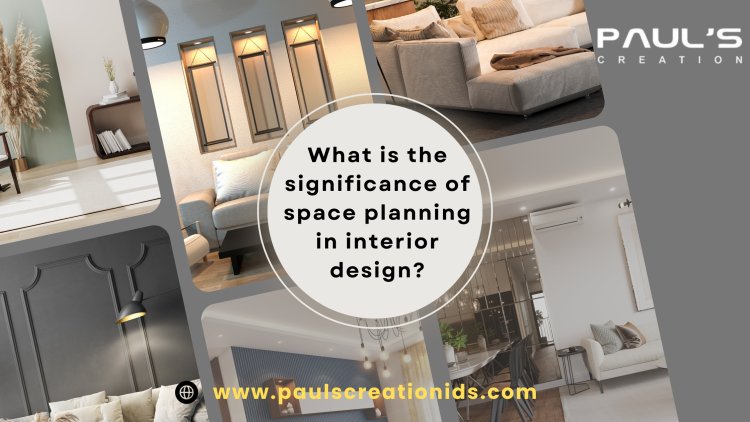What is the significance of space planning in interior design?
Share this Post to earn Money ( Upto ₹100 per 1000 Views )

In the field of interior design, space planning is a fundamental pillar that determines the beauty and functional success of an entire room. It is not simply about arranging furniture and decorations in a room. Rather, it is a careful process that considers how people move through and use the space, optimizing every square inch for both efficiency and visual Attraction.
Understanding space planning:
In interior design, space planning involves analyzing how a room will be used and arranging the furniture, furnishings, and traffic flow that will best suit it. It is a combination of art and science, requiring an eye for design beauty, and a deep understanding of human behavior and factors.
Functional Efficiency:
One of the main goals of space planning is to improve functional efficiency. This involves determining the optimal placement of important elements such as seating areas, work areas, storage units, and circulation routes. For example, in a living room, a space planner will consider where the sofa should be positioned relative to the TV for comfortable viewing, or how kitchen appliances should be positioned to allow for a smooth workflow when preparing food.
Circulation and Accessibility:
Good space planning makes it easier to move around and use a space. It takes into account circulation patterns, and how people move through a space, and ensures that paths are clear and free of obstructions. For example, in commercial spaces such as restaurants and offices, effective space planning minimizes congestion and ensures a pleasant experience for both visitors and employees.
Make the most of your space:
Space planning is also about making optimal use of available space, which is especially important in small homes and apartments. Space planners can make even mid-sized rooms appear spacious and functional with strategic placement of furniture and clever storage solutions. This might include using multifunctional furniture such as sofa beds or coffee tables with built-in storage to serve a dual purpose without cluttering the space.
Visual harmony:
In addition to functionality, space planning plays a key role in achieving visual harmony within a space. Not only does the arrangement of furniture and decor serve a practical purpose, but it also contributes to the overall visual appeal of the room. By balancing proportions, considering scale, and creating focal points, space planners create environments that are not only comfortable but also visually appealing.
Adaptation to user requirements:
Another important aspect of space planning is its ability to adapt to the specific needs and preferences of users. Whether designing a play area for children in the living room or creating a human factor workspace in a home office, space planners adapt the layout to the occupants' lifestyles and habits. This personalized approach improves the user experience and ensures the space effectively serves its intended purpose.
Collaboration and Communication:
Effective space planning often requires collaboration between architects, interior designers, and clients. Clear communication is necessary to understand the customer's vision, functional requirements, and visual preferences. Encouraging an open dialogue and exchange of ideas allows space planners to develop solutions that not only meet but exceed client expectations.
Environmental Aspects:
In modern interior design practice, space planning also includes environmental aspects. Designers aim to optimize a space's energy efficiency, natural light, and ventilation. This can include positioning windows to maximize daylight gain and selecting sustainable materials to minimize environmental impact.
Conclusion:
Space planning is the basis for successful interior design. It integrates functionality and beauty, ensuring that every square meter of space is optimally used. By focusing on efficiency, circulation, adaptability, and visual harmony, space planners create environments that are not only visually beautiful but also improve the quality of life of their occupants. Although interior design continues to evolve, space planning remains a fundamental tool for creating practical and inspiring spaces. Paul's creation offers premium Interior Designers in Bangalore.

 paulscreationids
paulscreationids 














